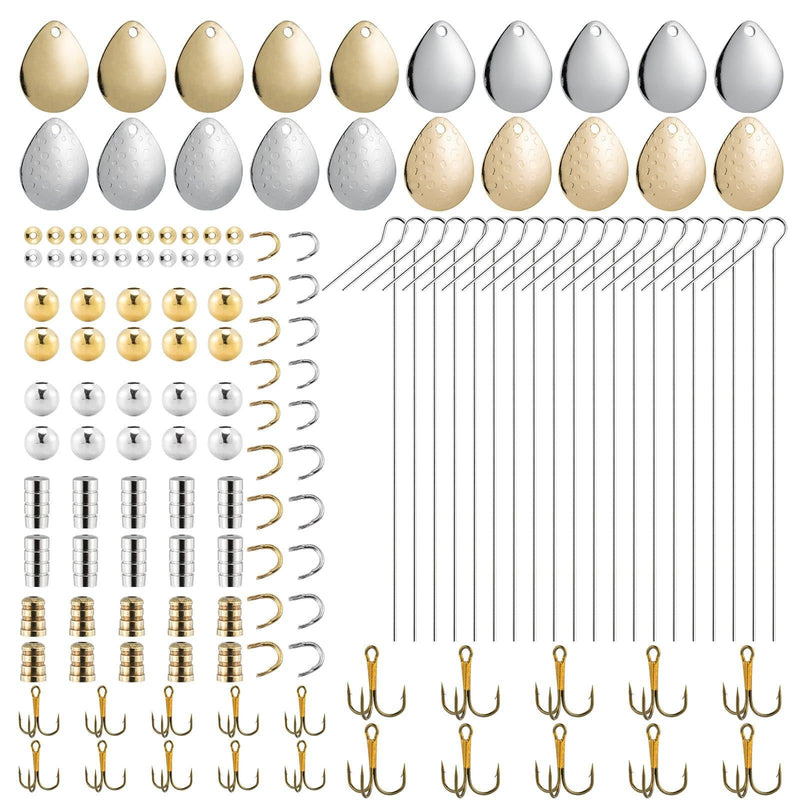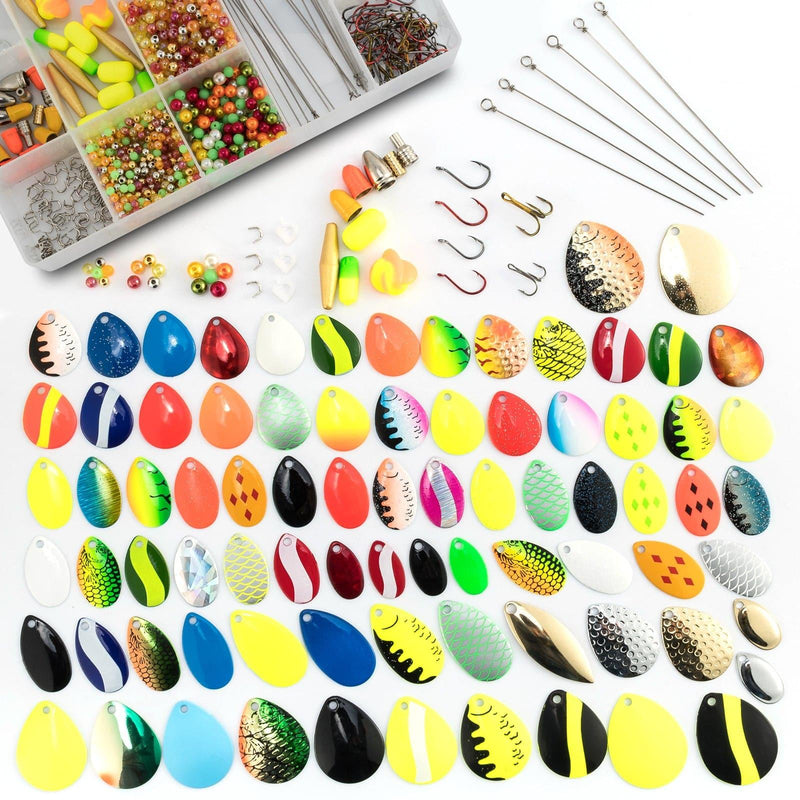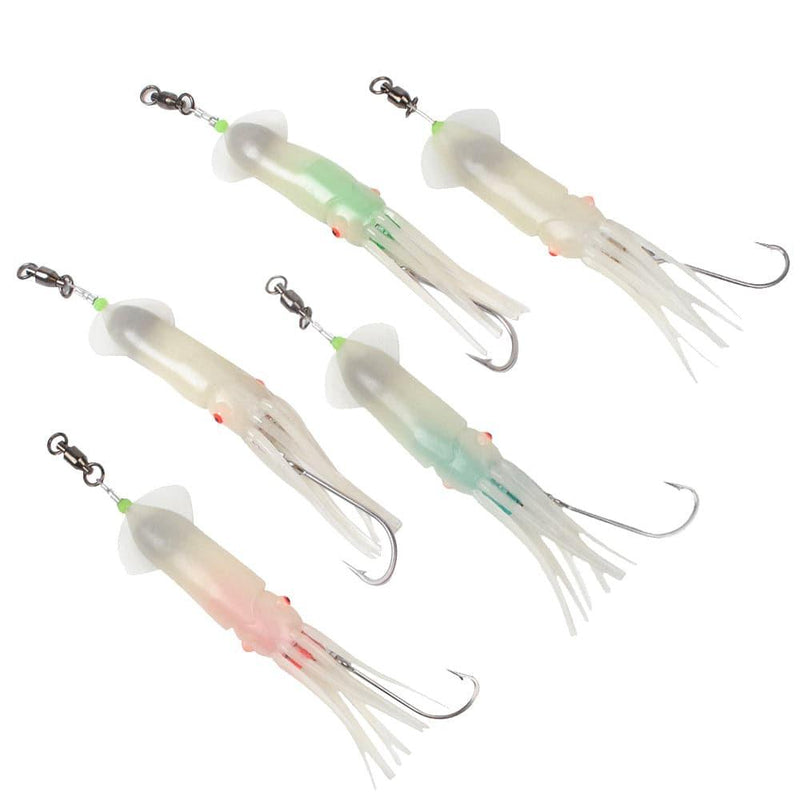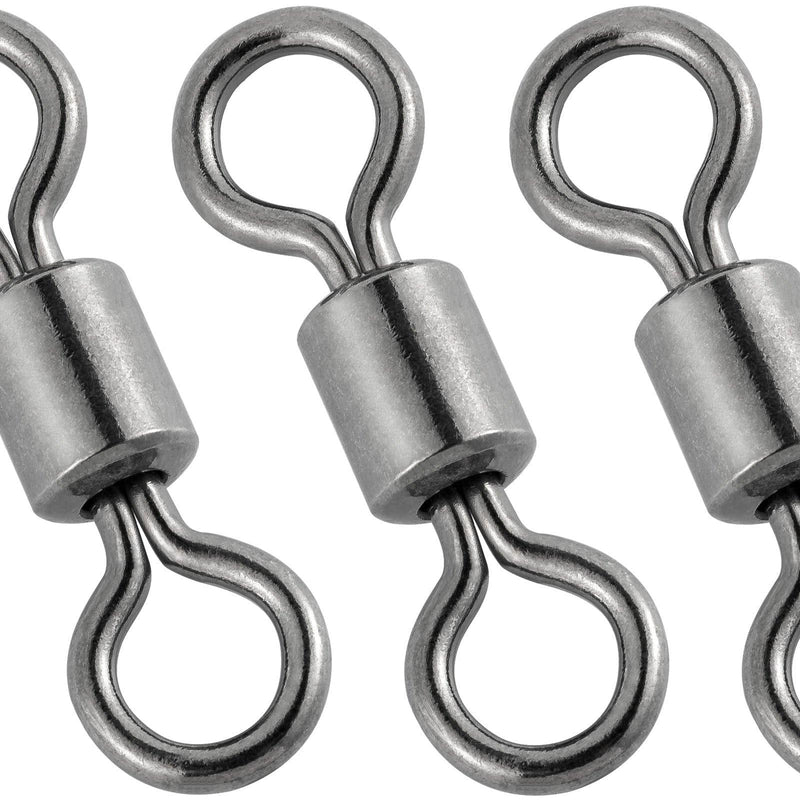Introduction
Fishing knots are the critical link between your hook, fishing line, and the fish. A poorly tied knot can result in lost fish, broken lines, and missed opportunities. On the other hand, a well-tied knot ensures that your gear functions properly under pressure, increases your catch rate, and boosts your confidence as an angler. In this blog post, we'll explore the importance of fishing knots, discuss some essential knots every angler should know, and provide tips on how to tie them effectively.
9 Beginner Friendly Fishing Knots
For your line to successfully draw that fish out, it is important to learn to tie a good knot on a fishing hook. With the following nine easy fishing knots, you never lose a catch!
- Clinch knot
Choose a clinch knot as your go-to fishing knot, which is a popular choice for fishermen. It’s known to be reliable and quick to tie, which means more fishing time!

Step by Step Instruction:
Step 1. Feed the line through the eye of the hook. Leave 4 in/10 cm of tag end (excess line) on the right and leave a gap above the hook eye.
Step 2. Use this thread to make 5 to 7 wraps around the line.
Step 3. Feed the tag end back up through the opening behind the hook.
Step 4. Moisten the lines and pull the knot tight.
- Snell knot
The Snell Knot is also a reliable connection that preserves the strength of the fishing line. This fishing knot was originally invented for use with eyeless hooks but it is still widely used today. It allows the leader, or tippet, to be directly tied to a baited hook.

Step by Step Instruction:
Step 1. Feed the line through the eye of the hook, form a small loop and bring tag end behind hook shank. You will want about four inches of tag to work with.
Step 2. Wrap the tag end around the hook shank and the line working from the point to the eye. Wrap the loop around the shank of the hook 5 or 7 times, from underside to topside.
Step 3. Pull the tag end to tighten. Make sure wraps are nice and neat on the hook shank and pull both ends very tight. Snip the tag end to remove excess thread.
- Palomar knot
The Palomar knot is the strongest and most reliable knot for tying on lures, hooks, and swivels. Palomar Knot comes close to being a 100% knot when tied properly. Although it is suitable for monofilament and fluorocarbon fishing lines, it works best with braids. With a little practice, you'll be able to tie it in the dark or with cold hands.

Step by Step Instruction:
Step 1. Double 6 inches/15cm of line and pass end of loop through eye of hook.
Step 2. Tie a loose overhand knot with hook hanging from bottom.
Step 3. Pass loop of line over the hook. Slide the loop above eye of hook.
Step 4. Pull on both the standing line and tag end to tighten knot down onto eye. Clip tag end close.
- Uni knot
The Uni Knot, also known as the Duncan Knot, is another simple to learn knot that is good for tying lures, hooks, and swivels. It works on braid, fluorocarbon, and monofilament lines. It is very similar to the Improved Clinch Knot.

Step by Step Instruction:
Step 1. Slide a line through eye of hook and double back parallel to the standing line. Make a loop by laying tag end over the doubled line.
Step 2. Make 5-6 turns with the tag end around the double line and through the loop.
Step 3. Moisten lines and pull tag end to snug up the turns.
Step 4. Slide knot down to the eye or leave a small loop.
- Turle knot
Is there anything you've tied more frequently while fly fishing than the turle knot? Without a doubt, the turle knot is one of the most commonly used knots in angling, second only to the clinch knot and uni-knot. Some even use it as their go-to knot for tying a fly to the tippet.

Step by Step Instruction:
Step 1. Slide a line through eye of hook. Make a loop with one end by bringing it towards you, encircling counterclockwise.
Step 2. To make a second loop, simply go over the top of the first and return to where you started.
Step 3. Wrap the larger loop around twice in the opposite direction of your intended path with one hand. Then hold on tightly, but not so tight that there is no give when pulling on both ends at the same time later!
Step 4. Move the larger loop over and under the fly or hook, wetting it thoroughly so that you can pull on both ends of the line until they snugly attach to their respective eye. Trim the tag end.
- Trilene knot
The Trilene Knot is often used in fly fishing. It’s also known as the Two Turn Clinch Knot, a very powerful and reliable fishing knot in tying a monofilament or fluorocarbon line to swivels, hooks, snaps and lures.

Step by Step Instruction:
Step 1. Pass the end of line twice through the eye of the hook.
Step 2. Use the end of the line to wrap around the standing line for 5-6 times.
Step 3. Pass it through the double loop at the hook.
Step 4. Tighten and cut off excess tag end.
- Pitzen Knot
The Pitzen Knot is also called the Eugene Bend or 16-20 Knot, which is used to tie a fly, hook, or lure to fishing line. It retains up to 95% of the line’s breaking strength, suitable for making in lighter lines.

Step by Step Instruction:
Step 1. Thread the line through the eye of the hook and loop the tag back.
Step 2. Wrap the tag end around the two parallel lines. Make 3-4 wraps working back down toward the eye.
Step 3. Pass the tag end back through the small loop.
Step 4. Tighten the knot down onto the standing line. Lubricate the knot and the line and slide the knot down to the hook eye. Do this with your finger tips, not by pulling the standing line. Pull tight once the knot is positioned at the hook.
Step 5. Trim the tag end.
- Davy Knot
If you want a quick and simple knot to tie, choose the Davy knot. The Davy knot is commonly used for small flies.

Step by Step Instruction:
Step 1. Feed the line through the hook eye.
Step 2. Loosely form a Half Hitch.
Step 3. Bring the line back through the loop and pass between the overhand knot and the hook itself.
Step 4. Tighten the knot by pulling first on the tag end to draw up the knot
- Orvis Knot
The Orvis Knot is a very easy and effective knot, which is used almost exclusively in fly fishing and works with all types of fishing lines, including monofilament, fluorocarbon, and braided lines.

Step by Step Instruction:
Step 1. Pass the line through the eye of the hook and make an “8” figure.
Step 2. Pass the end through the loop near the eye.
Step 3. Wrap it around the loop twice.
Step 4. Hold and tighten the wraps.
Step 5. Pull the standing line. The knot slides to touch the eye.
Step 6. Cut off the excess tag end.
Tips for Tying Fishing Knots
- Practice Makes Perfect: Spend time practicing tying knots until you can do it confidently without looking.
- Use Quality Line: High-quality fishing line is more reliable and easier to tie knots with.
- Keep it Tight: Always ensure your knots are tight and properly seated to avoid slippage.
- Moisten Knots: Before tightening knots, moisten them with saliva or water to prevent friction and heat buildup, which could weaken the line.
- Trim Excess: After tying a knot, trim any excess tag end to prevent it from catching on objects or vegetation underwater.
Conclusion
Mastering fishing knots is an essential skill for every angler. It enhances your fishing experience by increasing the reliability of your gear and improving your chances of landing that trophy fish. Whether you're tying on a lure, rigging up a leader, or connecting lines, knowing the right knot for the job is key. Practice these knots regularly, understand their strengths and weaknesses, and adapt them to suit different fishing conditions. With these skills in your arsenal, you'll be well-prepared to tackle any fishing challenge that comes your way.







great knots, easy to follow instructions.
THANK YOU ALL VERY MUCH. GOD BLESS.